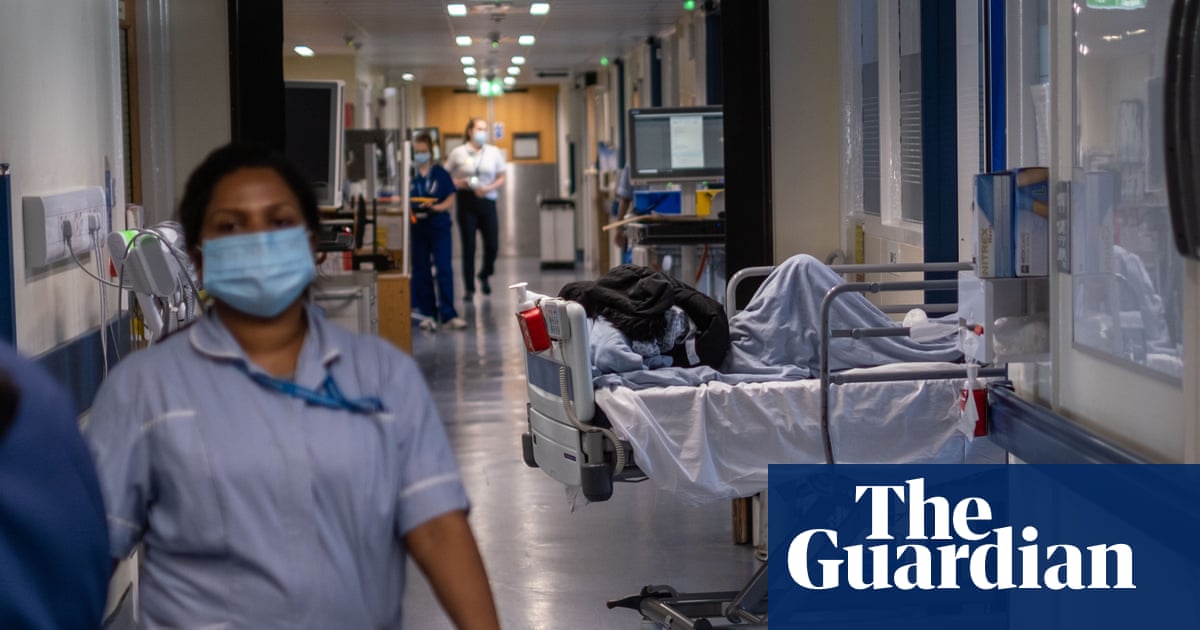Wes Streeting has staked the future of the NHS on a digital overhaul in which a beefed-up NHS app and new hospital league tables are promised to give patients unprecedented control over their care.
A dramatic expansion of the role of the NHS app will result in fewer staff than expected by 2035, with Streeting banking on digital efficiencies to reduce the number of frontline workers, a move described as a “large bet” by industry experts.
The digital tool will enable patients to self-refer when they need help, book appointments with clinicians, receive advice from an AI GP or see their medical records.
“The NHS app will become a doctor in your pocket, bringing our health service into the 21st century,” the health secretary said as he launched the government’s much-trailed 10-year health plan.
Highlighting that those who use private healthcare already get instant advice, remote consultations with a doctor and choice over their appointments, he promised that “our reforms will bring those services to every patient, regardless of their ability to pay”.
The plan is intended to transform the NHS in England into a more patient-focused service that keeps people healthier and out of hospital by providing care faster, digitally and close to their homes.
However, while experts welcomed the plan’s ambitions, they warned that staff shortages, the NHS’s fragile finances and failure to set out how delivery of its many goals would be achieved raised serious doubts over how soon changes would be implemented.
Sarah Woolnough, the chief executive of the King’s Fund, said: “Making significant progress to tackle hospital waiting lists while shifting the focus of the health service to prevent and better manage more care in the community is a tall order.”
The NHS will have a smaller workforce at the end of the 10-year period, because ministers are so confident that digital care will have become commonplace.
Woolnough said: “The government is placing a large bet on technology and automation freeing up enough clinician time so that fewer frontline staff will be needed in the future. If that bet doesn’t pay off the NHS could face an even larger staffing crisis.”
By 2028 the app will let patients access a new single patient record containing details of previous interactions with the NHS such as tests, operations and outpatient appointments.
The NHS’s embrace of tech to tackle its ills will also involve AI taking notes during GPs’ and hospital doctors’ consultations with patients and use generative AI to create the first draft of care plans, in an effort to give clinicians more time with the sick.
In a move designed to drive up standards of care, patients will also be able to see the data underpinning the rankings of hospital league tables, which will be published for the first time this summer – such as waiting times, how patients have rated particular services, and details of their clinical outcomes – and use it to choose the NHS trust where they will have their next treatment.
Expanding the role of technology to help the NHS “could be a real gamechanger”, said Thea Stein, the chief executive of the Nuffield Trust.
However, she rejected the plan’s claim that the NHS was so weakened after 14 years of neglect under the Conservatives that it “now stands at an existential brink” and needed radical surgery in order to avoid losing public support and becoming a two-tier “poor service for poor people”.
While public satisfaction with the NHS across Great Britain has plummeted to just 21% , support for its basic principles – a taxpayer-funded service that is open to all and free to use – remains “high and resilient”, Stein said. “We do not agree with the prophecy of extinction.”
after newsletter promotion
The plan outlines how Labour will implement three “radical shifts” in which the NHS will move from analogue to digital, treatment to prevention, and hospital-based care to far more community-based services.
Keir Starmer, launching the plan in London on the eve of the anniversary of Labour’s election victory, claimed that the embattled health service’s future was rosier after his party’s year in power.
He cited the hiring of 6,000 extra mental health staff and 1,700 additional GPs and the “record investment” the NHS was receiving -- £29bn more a year by 2029 compared to 2023-24 -- as proof of the government’s support for it.
“I’m not going to stand here and say everything is perfect now. We have a lot more work to do and we will do it.
“But let’s be under no illusions. Because of the fair choices we made, the tough Labour decisions we made, the future already looks better for our NHS.”
The plan makes clear that in future, the more prevention-focused NHS will operate on the basis that “care should happen as locally as it can; [be] digitally by default; in a patient’s home if possible; in a neighbourhood health centre when needed; [and] in a hospital if necessary”.
Over the next few years, billions of pounds of NHS funding will be taken away from hospitals and used to create a network of new one-stop-shop-style neighbourhood health centres “in every community” offering a range of services, including diagnostic tests and mental health support. However, it is unclear how many there will be or when they will open.
Dr Jennifer Dixon, the chief executive of the Health Foundation, warned that even Labour’s cash injection would not be enough to fulfil its pledge to “get the NHS back on its feet”.
“Making the plan happen with the resources on offer will be tough,” she said, given that the average 2.8% rise in the NHS’s budget from 2026 to 2029 was well below its historic average of 3.7%.

 13 hours ago
3
13 hours ago
3










 English (US)
English (US)